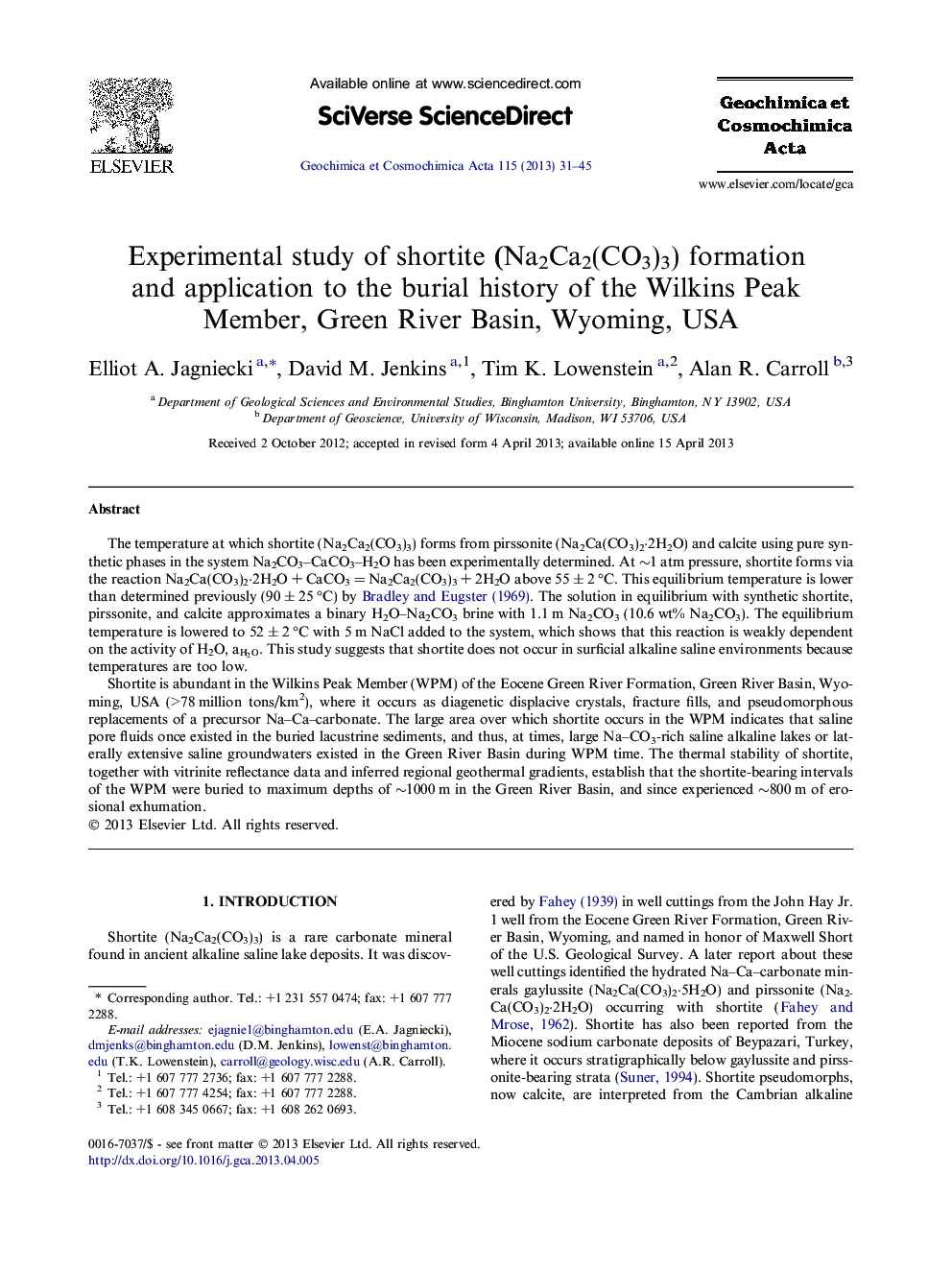| Article ID | Journal | Published Year | Pages | File Type |
|---|---|---|---|---|
| 4702342 | Geochimica et Cosmochimica Acta | 2013 | 15 Pages |
The temperature at which shortite (Na2Ca2(CO3)3) forms from pirssonite (Na2Ca(CO3)2·2H2O) and calcite using pure synthetic phases in the system Na2CO3–CaCO3–H2O has been experimentally determined. At ∼1 atm pressure, shortite forms via the reaction Na2Ca(CO3)2·2H2O + CaCO3 = Na2Ca2(CO3)3 + 2H2O above 55 ± 2 °C. This equilibrium temperature is lower than determined previously (90 ± 25 °C) by Bradley and Eugster (1969). The solution in equilibrium with synthetic shortite, pirssonite, and calcite approximates a binary H2O–Na2CO3 brine with 1.1 m Na2CO3 (10.6 wt% Na2CO3). The equilibrium temperature is lowered to 52 ± 2 °C with 5 m NaCl added to the system, which shows that this reaction is weakly dependent on the activity of H2O, aH2OaH2O. This study suggests that shortite does not occur in surficial alkaline saline environments because temperatures are too low.Shortite is abundant in the Wilkins Peak Member (WPM) of the Eocene Green River Formation, Green River Basin, Wyoming, USA (>78 million tons/km2), where it occurs as diagenetic displacive crystals, fracture fills, and pseudomorphous replacements of a precursor Na–Ca–carbonate. The large area over which shortite occurs in the WPM indicates that saline pore fluids once existed in the buried lacustrine sediments, and thus, at times, large Na–CO3-rich saline alkaline lakes or laterally extensive saline groundwaters existed in the Green River Basin during WPM time. The thermal stability of shortite, together with vitrinite reflectance data and inferred regional geothermal gradients, establish that the shortite-bearing intervals of the WPM were buried to maximum depths of ∼1000 m in the Green River Basin, and since experienced ∼800 m of erosional exhumation.
